-
 Bitcoin
Bitcoin $118000
-1.29% -
 Ethereum
Ethereum $3758
-3.52% -
 XRP
XRP $3.113
-5.04% -
 Tether USDt
Tether USDt $0.9998
-0.05% -
 BNB
BNB $818.5
-3.23% -
 Solana
Solana $181.9
-5.10% -
 USDC
USDC $0.9997
-0.04% -
 Dogecoin
Dogecoin $0.2239
-8.33% -
 TRON
TRON $0.3233
0.95% -
 Cardano
Cardano $0.7842
-6.81% -
 Hyperliquid
Hyperliquid $43.35
-2.12% -
 Sui
Sui $3.894
-9.97% -
 Stellar
Stellar $0.4176
-6.99% -
 Chainlink
Chainlink $17.97
-6.68% -
 Bitcoin Cash
Bitcoin Cash $576.7
-2.30% -
 Hedera
Hedera $0.2671
-7.23% -
 Avalanche
Avalanche $24.64
-6.12% -
 UNUS SED LEO
UNUS SED LEO $8.972
0.08% -
 Litecoin
Litecoin $108.1
-6.55% -
 Toncoin
Toncoin $3.198
-5.94% -
 Shiba Inu
Shiba Inu $0.00001325
-6.80% -
 Ethena USDe
Ethena USDe $1.001
-0.04% -
 Uniswap
Uniswap $10.27
-7.02% -
 Polkadot
Polkadot $3.935
-7.49% -
 Monero
Monero $317.7
-2.24% -
 Dai
Dai $0.9999
0.00% -
 Bitget Token
Bitget Token $4.550
-3.85% -
 Pepe
Pepe $0.00001179
-8.68% -
 Cronos
Cronos $0.1418
-2.34% -
 Aave
Aave $286.2
-6.49%
Is the TRIX triple smooth line golden cross effective? How to judge the trend when the indicator flattens?
TRIX golden cross signals bullish momentum in trending markets, but effectiveness varies; use with other indicators for confirmation.
Jun 09, 2025 at 09:08 pm
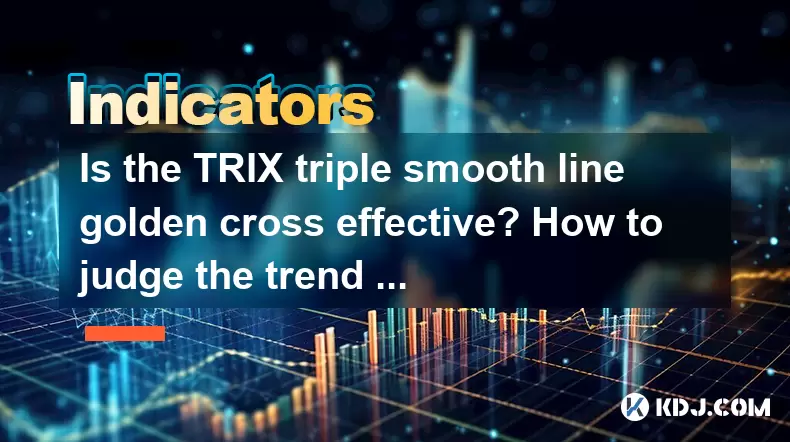
Understanding the TRIX Triple Smooth Line Indicator
The TRIX (Triple Exponential Average) is a momentum oscillator used by traders to identify overbought and oversold conditions in the market, as well as to signal potential trend reversals. It is calculated using a triple-smoothed moving average of the price's rate of change, which makes it less sensitive to short-term fluctuations and more responsive to longer-term trends. The golden cross in the context of TRIX refers to the moment when the TRIX line crosses above its signal line, which is typically a moving average of the TRIX itself. This event is considered a bullish signal by many traders.
Effectiveness of the TRIX Golden Cross
The effectiveness of the TRIX golden cross can vary depending on several factors, including the market conditions, the time frame being analyzed, and the specific parameters used for the TRIX and its signal line. In bullish markets, the TRIX golden cross can be a powerful indicator of continued upward momentum, often signaling that it is a good time to enter or hold onto long positions. In bearish markets, however, the golden cross might be less reliable, as the overall downtrend can overpower the bullish signals given by the TRIX.
To assess the effectiveness of the TRIX golden cross, traders often backtest the indicator against historical data. This involves applying the TRIX and its signal line to past price data and observing how well the golden cross predicted subsequent price movements. Successful backtesting results can increase confidence in the indicator, but traders should always consider the limitations of historical data and the possibility that past performance may not predict future results.
How to Identify a TRIX Golden Cross
Identifying a TRIX golden cross involves monitoring the TRIX line and its signal line. Here are the steps to recognize this bullish signal:
- Plot the TRIX line and its signal line on your trading chart. The TRIX line is typically calculated using a 15-period exponential moving average (EMA) of the price's rate of change, while the signal line is often a 9-period EMA of the TRIX line.
- Observe the crossover of the TRIX line above the signal line. This event is the golden cross and is considered a buy signal by many traders.
- Confirm the signal with other technical indicators or market conditions to increase the reliability of the trade setup.
Judging the Trend When the TRIX Indicator Flattens
When the TRIX indicator flattens, it suggests that the momentum in the market is waning, and the current trend might be losing strength. A flattening TRIX line can be a signal for traders to prepare for potential trend changes or reversals. Here’s how to judge the trend when the TRIX flattens:
- Monitor the price action alongside the TRIX. If the price continues to trend in the same direction while the TRIX flattens, it might indicate that the trend is still intact but losing momentum.
- Look for divergences between the price and the TRIX. If the price reaches new highs or lows while the TRIX fails to confirm these moves, it can be a strong signal of an impending trend reversal.
- Use other indicators to confirm the trend. Oscillators like the Relative Strength Index (RSI) or the Moving Average Convergence Divergence (MACD) can provide additional insights into the market's momentum and potential direction.
Using the TRIX Indicator in Different Market Conditions
The TRIX indicator can be adapted to different market conditions by adjusting its parameters. In volatile markets, traders might use shorter periods for the TRIX and its signal line to capture quicker trend changes. In more stable markets, longer periods might be more effective to filter out noise and focus on the underlying trend.
For example, in a highly volatile cryptocurrency market, a trader might use a 10-period TRIX with a 5-period signal line to respond more quickly to price movements. In contrast, in a less volatile market, a 20-period TRIX with a 10-period signal line might be more suitable to identify longer-term trends.
Practical Application of the TRIX Golden Cross
To apply the TRIX golden cross in a real trading scenario, consider the following steps:
- Set up your trading platform with the TRIX indicator. Most trading platforms allow you to add custom indicators, so ensure you have the TRIX and its signal line plotted on your chart.
- Choose the appropriate time frame for your trading strategy. Day traders might use shorter time frames like 15-minute or 1-hour charts, while swing traders might prefer daily or weekly charts.
- Wait for the TRIX golden cross to occur. When the TRIX line crosses above the signal line, it's time to consider entering a long position.
- Set your stop-loss and take-profit levels based on your risk management strategy. This could involve setting a stop-loss just below a recent swing low and a take-profit at a resistance level or based on a risk-reward ratio.
- Monitor the trade and adjust as necessary. If the TRIX starts to flatten or shows signs of a reversal, it might be time to exit the trade or tighten your stop-loss.
Combining the TRIX with Other Indicators
To enhance the reliability of the TRIX golden cross, many traders combine it with other technical indicators. The Moving Average Convergence Divergence (MACD) is a popular choice, as it also measures momentum and can confirm the signals given by the TRIX. When both the TRIX and MACD show a golden cross, it can increase the confidence in the bullish signal.
Support and resistance levels can also be used in conjunction with the TRIX. If the TRIX golden cross occurs near a strong support level, it can be a more compelling signal to enter a long position. Conversely, if the golden cross happens near a resistance level, it might be wise to wait for a breakout before acting on the signal.
Frequently Asked Questions
Q: Can the TRIX indicator be used for short selling?
A: Yes, the TRIX indicator can also be used for short selling. A death cross, where the TRIX line crosses below the signal line, is considered a bearish signal and can be used to initiate short positions. The same principles of waiting for confirmation and setting appropriate stop-loss levels apply to short selling as they do to buying.
Q: How often should I adjust the TRIX parameters?
A: The frequency of adjusting the TRIX parameters depends on your trading style and the market conditions. Short-term traders might need to adjust the parameters more frequently to adapt to changing market volatility, while long-term traders might set their parameters and leave them unchanged for extended periods.
Q: Is the TRIX indicator more effective in certain types of markets?
A: The TRIX indicator can be effective in various types of markets, but it tends to perform better in trending markets. In sideways or choppy markets, the TRIX might generate more false signals, so it's important to use it in conjunction with other indicators and to consider the overall market context.
Q: Can the TRIX indicator be used for cryptocurrencies other than Bitcoin?
A: Yes, the TRIX indicator can be used for any cryptocurrency. Its effectiveness might vary depending on the specific cryptocurrency's volatility and market behavior, but the principles of using the TRIX golden cross and monitoring for flattening trends remain the same across different assets.
Disclaimer:info@kdj.com
The information provided is not trading advice. kdj.com does not assume any responsibility for any investments made based on the information provided in this article. Cryptocurrencies are highly volatile and it is highly recommended that you invest with caution after thorough research!
If you believe that the content used on this website infringes your copyright, please contact us immediately (info@kdj.com) and we will delete it promptly.
- XRP Price Prediction: July 29th - Will XRP Break Free?
- 2025-07-29 15:30:12
- SEC, Truth Social, and Bitcoin ETFs: A New York Minute on Crypto Regulation
- 2025-07-29 15:10:12
- Bitcoin Treasury Titans: Decoding Strategy, BTC Purchases, and the MSTR Gamble
- 2025-07-29 15:10:12
- Ethereum, Dogecoin, and Little Pepe: A Crypto Trifecta for 2025?
- 2025-07-29 15:35:12
- LILPEPE vs DOGE: The Meme Coin Landscape in 2025
- 2025-07-29 15:40:13
- Dogecoin vs. Little Pepe: The Meme Coin Throne in 2025
- 2025-07-29 15:45:12
Related knowledge
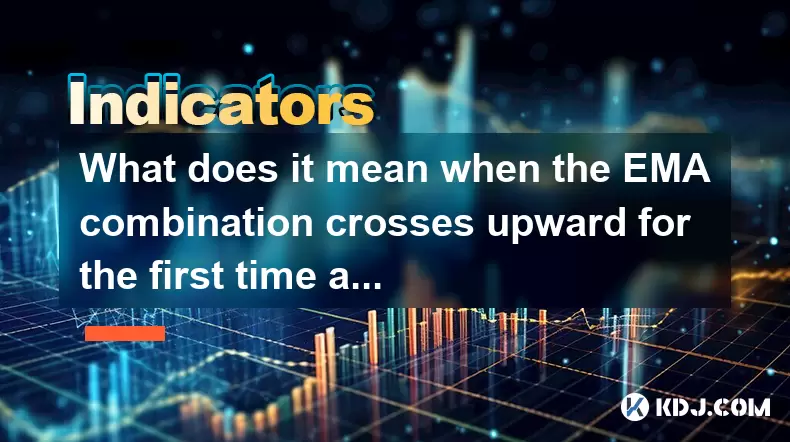
What does it mean when the EMA combination crosses upward for the first time after sideways trading?
Jul 28,2025 at 03:43pm
Understanding the EMA and Its Role in Technical AnalysisThe Exponential Moving Average (EMA) is a widely used technical indicator in cryptocurrency tr...
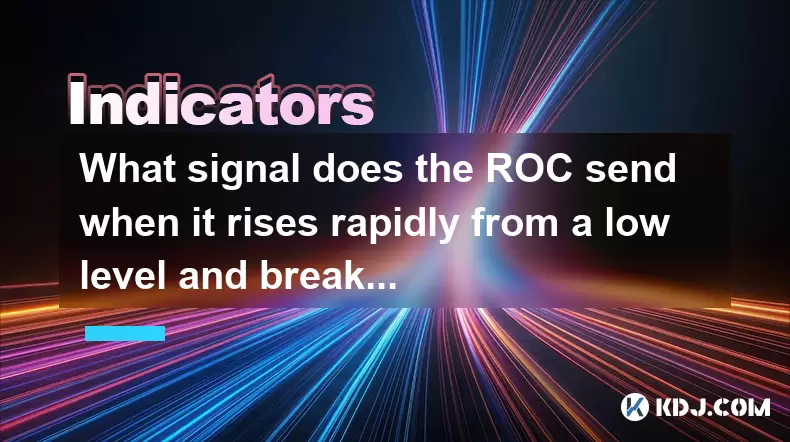
What signal does the ROC send when it rises rapidly from a low level and breaks through the zero axis?
Jul 27,2025 at 10:15am
Understanding the Rate of Change (ROC) IndicatorThe Rate of Change (ROC) is a momentum-based oscillator used in technical analysis to measure the perc...
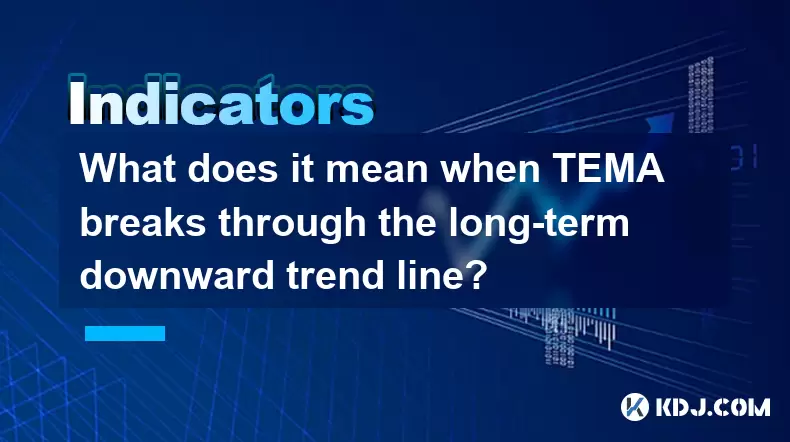
What does it mean when TEMA breaks through the long-term downward trend line?
Jul 29,2025 at 02:50pm
Understanding the Role of Smart Contracts in Decentralized Finance (DeFi)Smart contracts are self-executing agreements with the terms of the agreement...
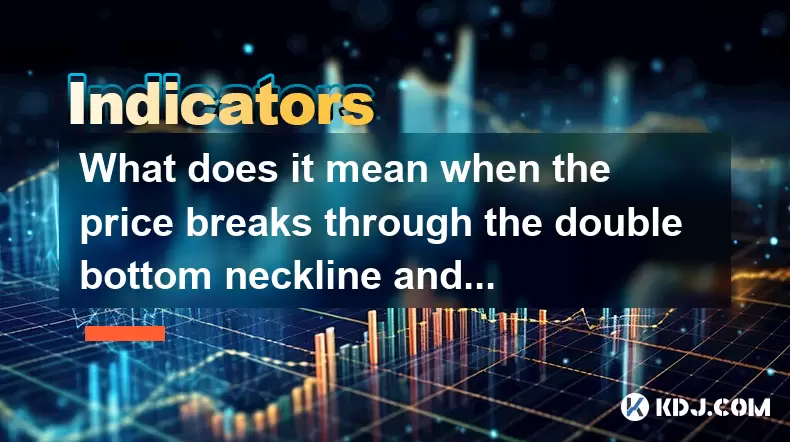
What does it mean when the price breaks through the double bottom neckline and the moving averages are arranged in a bullish pattern?
Jul 28,2025 at 10:57am
Understanding the Double Bottom PatternThe double bottom is a widely recognized reversal chart pattern in technical analysis, particularly within the ...
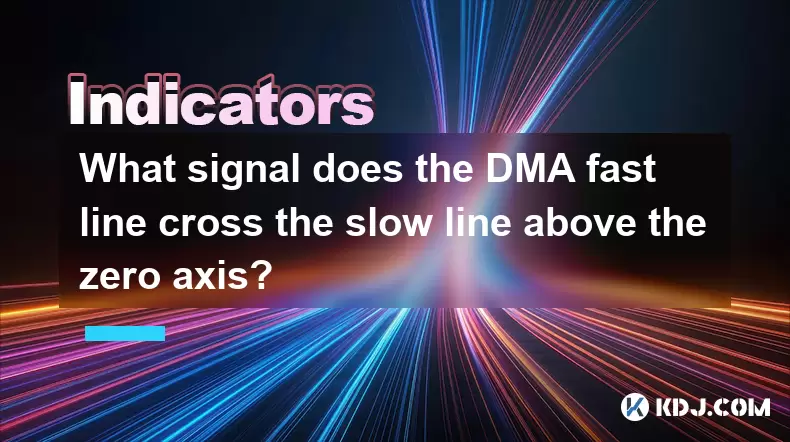
What signal does the DMA fast line cross the slow line above the zero axis?
Jul 28,2025 at 05:42am
Understanding the DMA Indicator and Its ComponentsThe DMA (Difference of Moving Averages) indicator is a technical analysis tool used in cryptocurrenc...
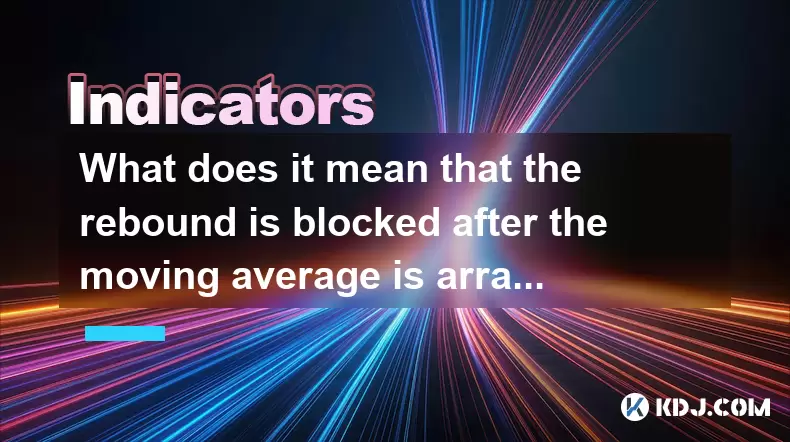
What does it mean that the rebound is blocked after the moving average is arranged in a short position for the first time?
Jul 26,2025 at 10:51am
Understanding the Short-Term Moving Average ConfigurationWhen traders refer to a 'short position arrangement' in moving averages, they are describing ...

What does it mean when the EMA combination crosses upward for the first time after sideways trading?
Jul 28,2025 at 03:43pm
Understanding the EMA and Its Role in Technical AnalysisThe Exponential Moving Average (EMA) is a widely used technical indicator in cryptocurrency tr...

What signal does the ROC send when it rises rapidly from a low level and breaks through the zero axis?
Jul 27,2025 at 10:15am
Understanding the Rate of Change (ROC) IndicatorThe Rate of Change (ROC) is a momentum-based oscillator used in technical analysis to measure the perc...

What does it mean when TEMA breaks through the long-term downward trend line?
Jul 29,2025 at 02:50pm
Understanding the Role of Smart Contracts in Decentralized Finance (DeFi)Smart contracts are self-executing agreements with the terms of the agreement...

What does it mean when the price breaks through the double bottom neckline and the moving averages are arranged in a bullish pattern?
Jul 28,2025 at 10:57am
Understanding the Double Bottom PatternThe double bottom is a widely recognized reversal chart pattern in technical analysis, particularly within the ...

What signal does the DMA fast line cross the slow line above the zero axis?
Jul 28,2025 at 05:42am
Understanding the DMA Indicator and Its ComponentsThe DMA (Difference of Moving Averages) indicator is a technical analysis tool used in cryptocurrenc...

What does it mean that the rebound is blocked after the moving average is arranged in a short position for the first time?
Jul 26,2025 at 10:51am
Understanding the Short-Term Moving Average ConfigurationWhen traders refer to a 'short position arrangement' in moving averages, they are describing ...
See all articles

























































































